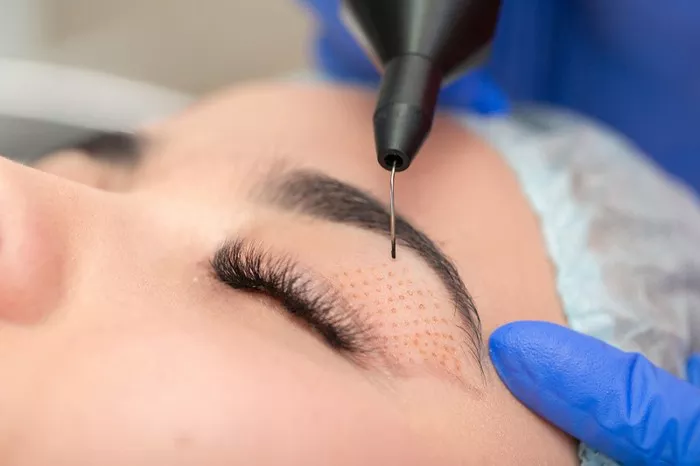Blepharoplasty, commonly known as eyelid surgery, is a popular cosmetic procedure that aims to improve the appearance of the eyelids by removing excess skin, fat, and muscle. While blepharoplasty can provide significant aesthetic benefits, it is not suitable for everyone. In this article, we will explore the factors that make someone a poor candidate for blepharoplasty.
1. Unrealistic Expectations
One of the key factors that disqualify an individual from undergoing blepharoplasty is having unrealistic expectations. It is essential for patients to have a clear understanding of what the procedure can and cannot achieve. Blepharoplasty can enhance the appearance of the eyelids, reduce puffiness, and create a more youthful look. However, it cannot completely eliminate wrinkles, crow’s feet, or dark circles. Patients who expect dramatic and unrealistic results may be disappointed with the outcome of the surgery.
2. Poor General Health
Good overall health is crucial for any surgical procedure, including blepharoplasty. Individuals with underlying medical conditions such as uncontrolled diabetes, high blood pressure, heart disease, or autoimmune disorders may not be suitable candidates for surgery. These conditions can increase the risk of complications during and after the procedure. Additionally, individuals who are currently undergoing cancer treatment or have a weakened immune system should avoid elective surgeries like blepharoplasty until their health improves.
3. Eye Conditions and Diseases
Certain eye conditions and diseases can make someone unsuitable for blepharoplasty. For example, individuals with dry eyes, glaucoma, detached retina, or other serious eye problems may not be good candidates for the procedure. The surgery can potentially worsen these conditions or interfere with their treatment. It is crucial for patients to undergo a comprehensive eye examination before considering blepharoplasty to ensure that their eyes are healthy and free from any underlying issues.
4. Insufficient Eyelid Tissue
Blepharoplasty involves the removal of excess skin, fat, and muscle from the eyelids. However, individuals with insufficient eyelid tissue may not be suitable candidates for the procedure. The surgeon needs enough tissue to work with in order to achieve optimal results. Patients with thin or weak eyelid tissue may not have enough excess skin or fat to remove, making the surgery ineffective. In such cases, alternative treatments or procedures may be recommended to address specific concerns.
5. Medications and Lifestyle Factors
Certain medications and lifestyle factors can affect the suitability of an individual for blepharoplasty. For instance, individuals who take blood-thinning medications like aspirin or anticoagulants may have an increased risk of bleeding during and after surgery. Smoking is another factor that can negatively impact the healing process. Nicotine restricts blood flow, which can lead to complications and delayed recovery. Surgeons often advise patients to quit smoking several weeks before and after the procedure to minimize risks.
6. Psychological Considerations
Psychological well-being plays a significant role in determining whether someone is a good candidate for blepharoplasty. Individuals with unrealistic body image expectations, body dysmorphic disorder (BDD), or other psychological conditions may not be suitable candidates for cosmetic surgery. It is crucial for patients to have a healthy mindset and realistic expectations about the outcomes of the procedure. A thorough consultation with a qualified plastic surgeon can help assess the patient’s mental and emotional readiness for blepharoplasty.
7. Age Considerations
While age alone does not disqualify someone from undergoing blepharoplasty, it is an important factor to consider. Younger individuals with minimal signs of aging may not benefit significantly from the procedure. On the other hand, older individuals with more advanced signs of aging may require additional procedures, such as a brow lift or facelift, to achieve the desired results. A comprehensive evaluation by a plastic surgeon can help determine the most appropriate treatment plan based on the patient’s age and specific concerns.
Conclusion
Blepharoplasty can be a transformative procedure for individuals seeking to improve the appearance of their eyelids. However, it is essential to identify who is not a good candidate for the surgery. Unrealistic expectations, poor general health, eye conditions, insufficient eyelid tissue, medications and lifestyle factors, psychological considerations, and age are all important factors to consider when determining suitability for blepharoplasty. Consulting with a qualified plastic surgeon is crucial to assess individual circumstances and explore alternative options if necessary. Ultimately, the goal is to ensure the safety and satisfaction of the patient while achieving the desired aesthetic outcomes.

